The Best Guide of Canada Travel Tips For Seniors
In this Canada travel guide you will find fun facts, tips for traveling to Canada, things to know when traveling to Canada and more!
Group Travel to Canada with Road Scholar
Chosen as our Campus of the Year for 2020, Canada is one of our favorite countries to explore. Our experts at Road Scholar can help you navigate the vast landscapes and diverse cities that wind through all 13 provinces and territories in this Canada travel guide. From educational tours through Quebéc’s lively art and history scene to exploring the vast countryside by train, there are many adventures to be had in Canada.
We hope this Canada travel guide answers all the questions you may have before you embark on your journey. Read on to discover our Canada travel tips and learn more about this intriguing destination.
Why Canada for Seniors?
There are countless reasons why Canada is an excellent destination for seniors. Canada is a stone’s throw away from America, making it easy to travel to, whether by train, plane or car. Ensuring you have your travel documents current and packed is one of the top tips for traveling to Canada from the U.S. to ensure a seamless border crossing.
Once you’re in Canada, you can enjoy a wide range of experiences, from the gastronomy of cultural hubs like Quebec, Toronto and Victoria to outdoor adventures in national parks like Banff and Jasper. Canada is also an excellent destination for seniors because of its senior-friendly tourism infrastructure, safety and cleanliness, guided tours and cultural and historical sites. Find an adventure in Canada today and explore our special offers to book your next Canadian experiential learning program.
Activities and Attractions
The best travel guide to Canada will outline some of the top activities and attractions to explore. One practical tip for going to Canada is to research what landmarks and activities you want to see and do. Some of Canada’s top highlights include:
- Niagara Falls
- Banff National Park
- Jasper National Park
- Whistler
- Prince Edward Island
- Royal Tyrrell Museum
- Aurora Borealis
- Bay of Fundy
- Winter Carnival in Quebec City
Canada Fast Facts
- Population: 37.59 million
- Languages: English and French
- Capital: Ottawa (population 994,837)
- Currency: Canadian Dollar (CAD)
- Time Zone: UTC-3:30 (NF and southeastern LB), UTC-4 (most of LB and all of NB, NS, and PEI), UTC-5 (eastern NU, ON, QC), UTC-6 (MB, most of SK and NU), UTC-7 (AL, NT, western NU, SK, eastern BC), UTC-8 (BC, YT)
- Size: 3.855 million square miles – the 2nd largest country in the world by total area
- Major Cities: Toronto, Hamilton, Ottawa, Vancouver, Victoria, Calgary, Edmonton, Winnipeg, Montréal, Québec City, Saskatoon, St. John, Yellowknife, Charlottetown, Whitehorse and Halifax
Canadian Provinces and Territories
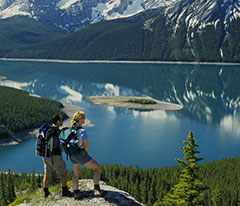
- Population: 4.371 million
- Capital: Edmonton
- Time Zone: UTC-7
- Known for: The Rocky Mountains, fly fishing, hiking, unique wildlife and national parks
- Major Cities/Attractions: Edmonton, Calgary, Banff National Park, Jasper National Park, Waterton Lakes National Park, Wood Buffalo National Park and the Calgary Stampede
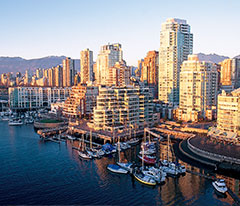
- Population: 5.071 million
- Capital: Victoria
- Time Zone: UTC-7 (Eastern British Columbia), UTC-8 (Western British Columbia)
- Known for: Scenic coast, bear and whale watching, hiking, kayaking and water sports
- Major Cities/Attractions: Vancouver Island, Victoria, Whistler, Yoho National Park, Glacier National Park, Kootenay National Park, Haida Gwaii and Butchart Gardens
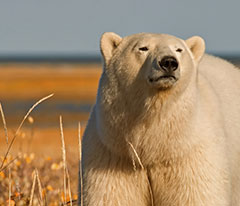
- Population: 1.369 million
- Capital: Winnipeg
- Time zone: UTC -6
- Known for: Polar bears, northern lights, beluga whale watching, wildflowers and remote landscapes
- Major Cities/Attractions: Winnipeg, Churchill, Canadian Museum of Human Rights, Canadian Fossil Discovery Center, Riding Mountain National Park, Pinawa Dam Provincial Park and Whiteshell Provincial Park
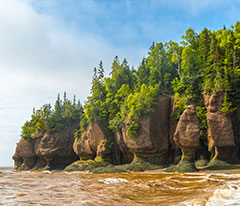
- Population: 776,827
- Capital: Fredericton
- Time zone: UTC -4
- Known for: The Bay of Fundy, Acadian culture, maritime history and whale watching
- Major Cities/Attractions: Saint John, Hopewell Rocks, Bay of Fundy National Park, Roosevelt Campobello International Park, Parlee Beach and Kouchibouguac National Park, Kingsbrae Garden and Kings Landing
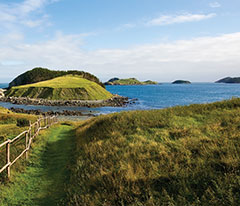
- Population: 521,542
- Capital: St. John’s
- Time Zone: UTC -3:30
- Known for: Remote and dramatic landscapes, welcoming people, fishing history, whale watching, puffins, fossils, iceberg viewing and hiking
- Major Cities/Attractions: Gros Morne National Park, Terra Nova National Park, L'Anse aux Meadows National Historic Site, Cape St. Mary's Ecological Reserve and Twillingate and Fogo Island
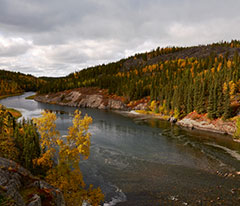
- Population: 44,826
- Capital: Yellowknife
- Time Zone: UTC -7
- Known for: Gold mining history, remote landscapes, northern lights, kayaking, canoeing, bison, hot springs, midnight sun and First Nations culture
- Major Cities/Attractions: Yellowknife, Inuvik, Banks Island, Victoria Island, Nahanni National Park Reserve, Wood Buffalo National Park, Hay River and Great Bear Lake
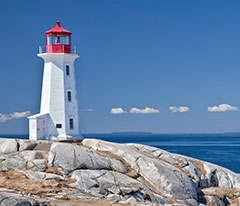
- Population: 971,395
- Capital: Halifax
- Time Zone: UTC -4
- Known for: The Bay of Fundy, maritime history, fishing villages and seaside towns
- Major Cities/Attractions: Halifax, Cabot Trail, Peggy’s Cove, Lunenburg, Fortress of Louisbourg National Historic Site, Cape Breton Highlands National Park, Annapolis Royal Historic Gardens and Shubenacadie Provincial Wildlife Park

- Population: 38,780
- Capital: Iqaluit
- Time Zone: UTC -6 and UTC -7
- Known for: Northern lights, winter sports, little to no cars, remote landscapes, polar bears and arctic wildlife, birdwatching, midnight sun and Inuit culture
- Major Cities/Attractions: Baffin Island, Ellesmere Island, Iqaluit, Repulse Bay, Auyuittuq National Park, Quttinirpaaq National Park, Sirmilik National Park and Qaummaarviit Territorial Park
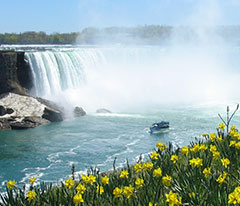
- Population: 14.57 million
- Capital: Toronto
- Time Zone: UTC -4 (eastern Ontario) and UTC -5 (western Ontario)
- Known for: The Great Lakes, Niagara Falls, unique nature, theater and multicultural cities
- Major Cities/Attractions: Toronto, Thousand Islands, Ottawa, Parliament Hill, Niagara Falls, Bruce Peninsula National Park, Georgian Bay Islands National Park, Fathom Five National Marine Park, Petroglyphs Provincial Park, National Gallery of Canada and Royal Ontario Museum
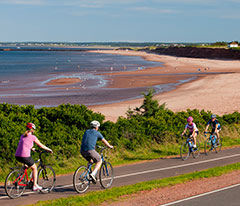
- Population: 156,947
- Capital: Charlottetown
- Time Zone: UTC-4
- Known for: Coastal drives, lighthouses, seafood, biking, red sand beaches and the home of Anne of Green Gables
- Major Cities/Attractions: Charlottetown, Summerside, Victoria-by-the-Sea, PEI National Park, 6 Basin Head Provincial Park, Confederation Centre of the Arts and Confederation Trail
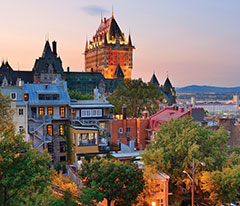
- Population: 8.485 million
- Capital: Québec City
- TIme Zone: UTC-5
- Known for: Bilingual province, French culture and European-inspired architecture
- Major Cities/Attractions: Montréal, Québec City, Place Royale, Le Château Frontenac, Forillon National Park, Chutes Montmorency, Canadian Museum of History, Mont Tremblant, Hudson Bay and Bonaventure Island
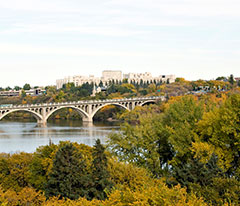
- Population: 1.174 million
- Capital: Regina
- Time Zone: UTC -5 & UTC -6
- Known for: Northern lights, stargazing, amazing sunsets, kayaking, canoeing, sand dunes, prairies, purple sand beaches and First Nations culture
- Major Cities/Attractions: Saskatoon, Regina, Prince Albert National Park, Grasslands National Park, Wanuskewin Heritage Park, RCMP Heritage Centre, Royal Saskatchewan Museum and Qu'Appelle Valley
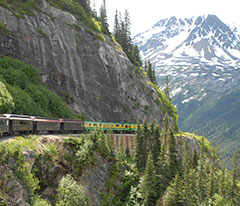
- Population: 35,874
- Capital: Whitehorse
- Time Zone: UTC -7
- Known for: Gold mining history, northern lights, pristine wilderness, unique wildlife, glaciers, hiking, canoeing, kayaking, midnight sun and First Nations culture
- Major Cities/Attractions: Dawson City, Chilkoot Trail, The Northern Lights Space and Science Centre, Kluane National Park, Ivvavik National Park, Tombstone Territorial Park, Miles Canyon, MacBride Museum, Emerald Lake and the Yukon River
“Going across Canada was a lifelong dream that was finally fulfilled! I met people from all over the world and was exposed to such a vast geography and wealth of information that I am still thinking about it daily, even a month after I arrived home. My favorite place was Jasper National Park – its beauty is remarkable!”
— Jerry from Ligonier, Pa. —
Weather in Canada
Like the United States, Canada’s climate depends on where you want to explore. Though cold weather is probably what comes to mind first, Canada actually has four very distinct seasons, and many of its major cities are in the southern region, away from the Arctic north.
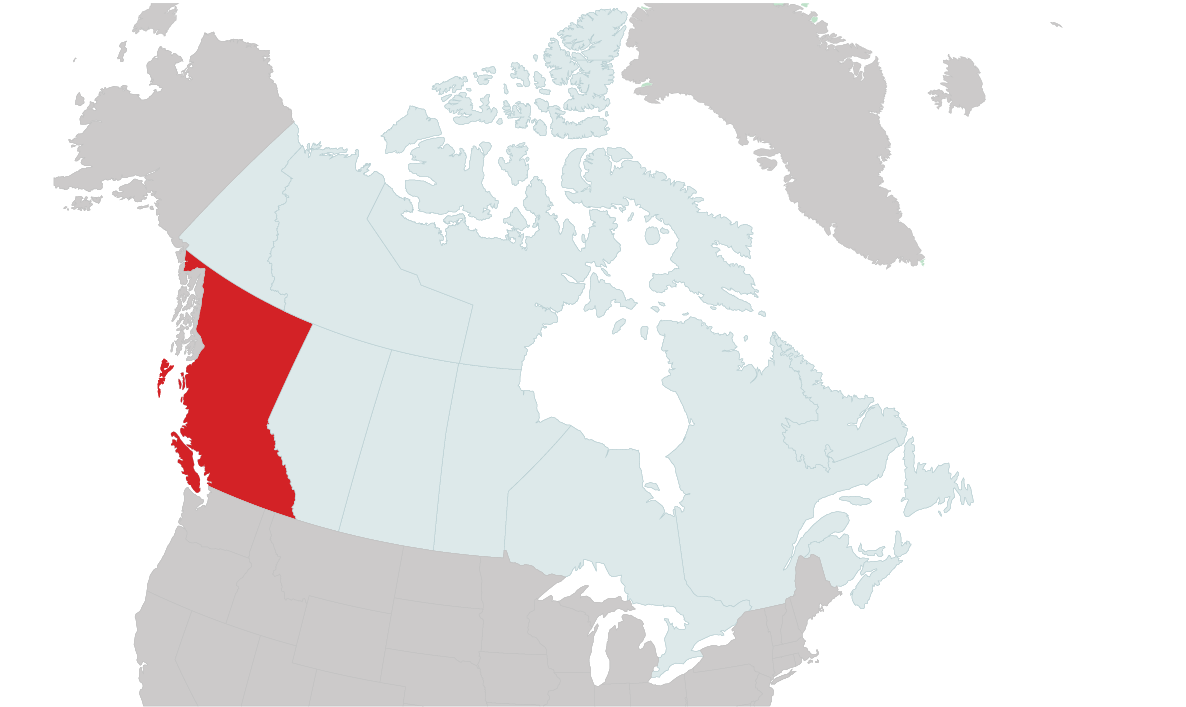
If you’re looking for a mild summer and winter, stick to the coast where the Pacific Ocean offers a nice breeze and snow is mostly replaced by rainfall. Toward the center of B.C. though, temperatures can be pretty compatible to many parts of the U.S., averaging 86-104°F in the summer and snowfall will be pretty regular from November to March. Spring and fall are beautiful all over this province, bringing temperatures perfect for light sweaters.

In the western part of the mountains it can be quite humid, but head inland and you’re welcomed by the refreshingly dry air. Winters can be quite cold in this region at around 30°F– though perfect for skiing! – and blizzards are a possibility. However, every so often when the wind changes, a warm and dry Chinook is gifted on the region, drastically raising the temperature and melting all the snow. In the summer when exploring Canada’s Rockies, enjoy the mild temperatures around the low 70s, with cooler nights.
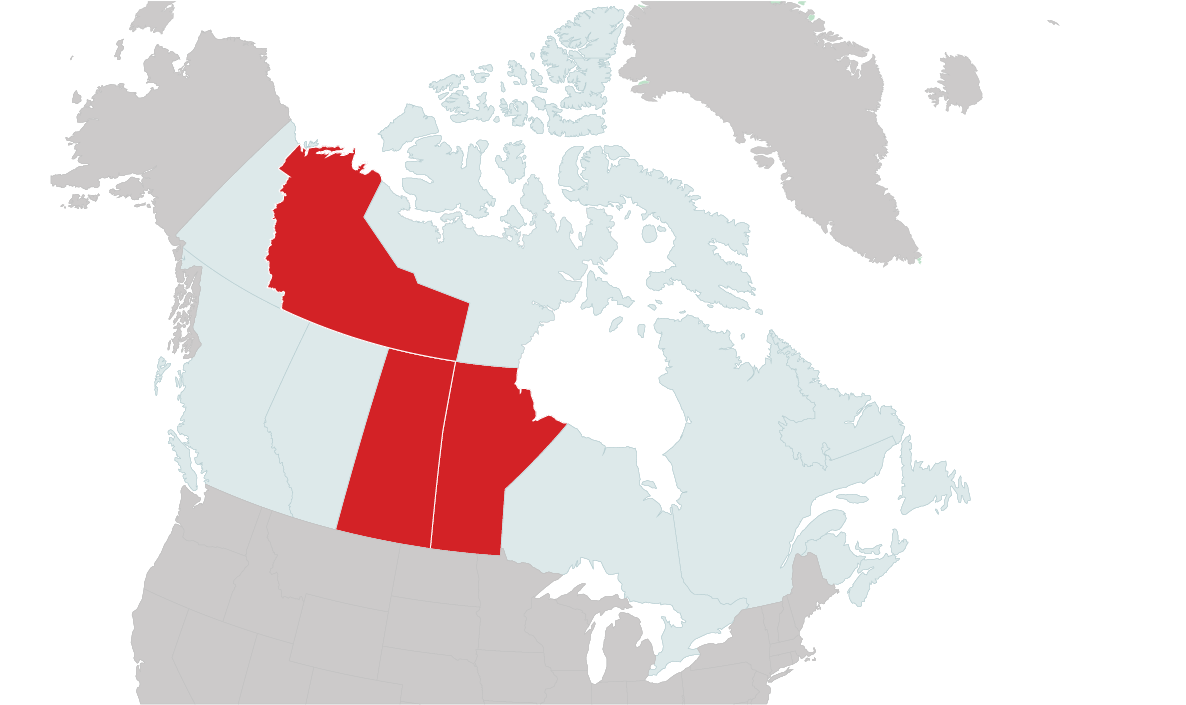
Prepare yourself for long, cold winters and shorter summers, though precipitation is at its lowest in this region. Pack a heavy jacket and face possible negative temperatures December-February, but be rewarded in the summer with temperatures in the 70s. Northern parts of Manitoba are met with arctic and subarctic temperatures, dropping as low as -20°F in the winter and averaging 65°F in the summer.
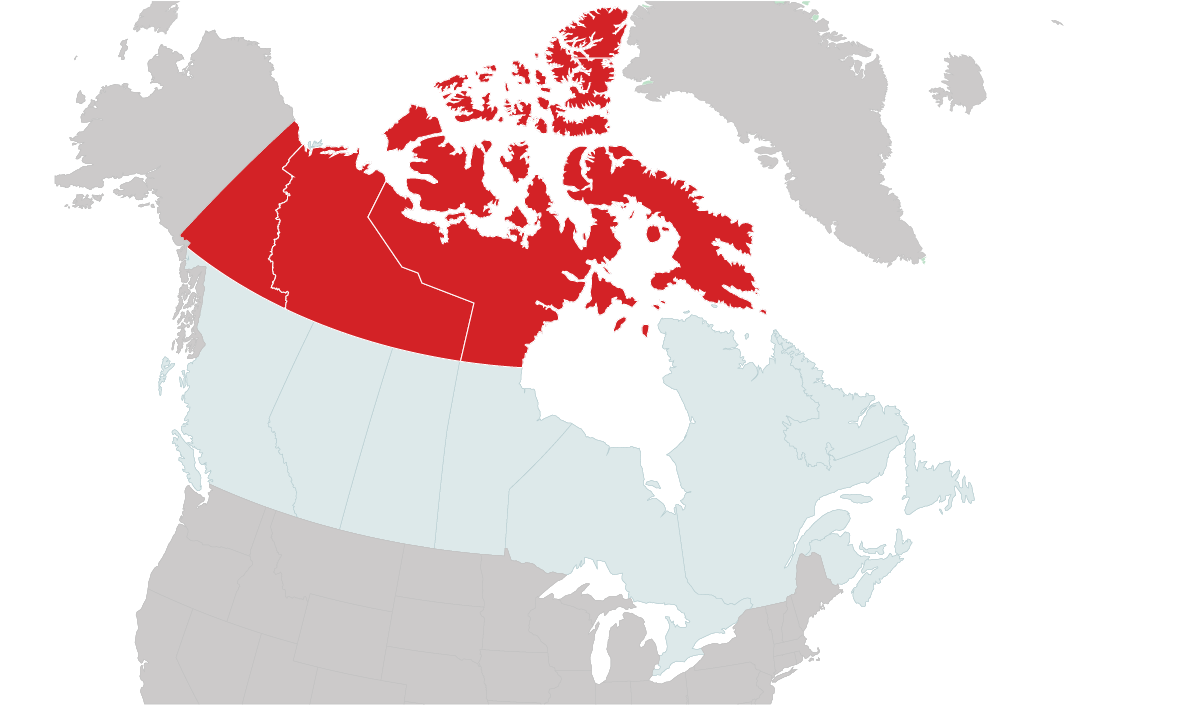
Sticking true to its reputation as the “Great White North,” these territories are met with arctic and subarctic temperatures, dropping as low as -20°F in the winter and averaging 65°F in the summer. Keep in mind that parts of the region fall in the “land of the midnight sun” where the sun shines 24 hours a day in the summer and not at all in the colder months.
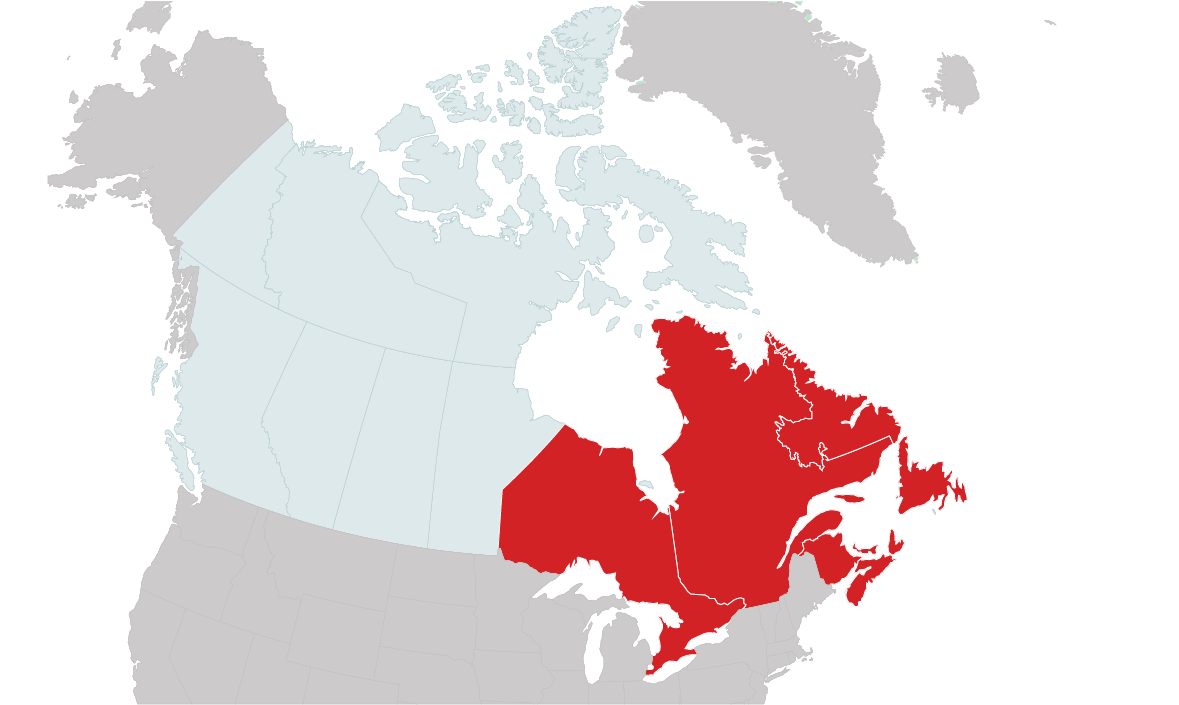
The Canadian east coast provinces get an abundance of precipitation all year round but the Atlantic current also offers a nice breeze in the summer. Temperatures are around the 30s in the winter while averaging in the low 70s for the summer, with fog more common during the hotter months.
Best Time to Visit Canada
Here at Road Scholar, we agree that the best times to visit Canada are April-June and September-November when the weather is warmer and the crowds have lessened from that of peak season.
That being said, the best time to visit Canada is certainly subjective. If you don’t mind cold weather, the wintertime offers beautiful snow-filled landscapes and excellent offerings of winter sports. In winter, visitors will be able to ski the steep Chutes of British Columbia, ice skate the Rideau Canal in Ottawa, and witness the spectacular Northern Lights.
In springtime in Canada with milder temperatures and fun festivals throughout the country. Feast your eyes on a sea of beautiful Tulips in Ottawa at the Canadian Tulip Festival. The Annapolis Apple Blossom Festival in Nova Scotia is not to be missed. And who doesn’t love to bear witness to the blooms of a cherry tree, which you can do in Vancouver at the Cherry Blossom Festival. What a spectacle of eye candy for those who appreciate nature in full bloom!
If you are ready to forge ahead with the rest of the crowds in the summer months, there are beautiful sights to behold. In July, tap into your love of cowboy culture at the Calgary Stampede in July, and then listen to some of the best jazz in the world at the Festival de Jazz de Montreal (Montreal Jazz Festival in July) in Quebec. If you appreciate the great outdoors, summer is a great time to soak in all the open space and natural wonders Canada has to offer.
The bright, colorful changing leaves of Autumn will leave you awe-inspired from September to December. From a luscious green, the foliage in Canada transforms to vivid yellows, oranges, and reds. A few of the popular events in the Autumn season are The Tremblant Symphony of Colors in Quebec, Kitchener/Waterloo Oktoberfest, the Niagara Grape & Wine Festival in St. Catherines, and the Celtics Colors International Festival in Nova Scotia.
A Guide to Canadian Culture
Canada was once a French colony, which was conquered by the British, and now the country has a dual colonial heritage that influences its culture today. Canadian culture is known to be multicultural and progressive, with influence from Great Britain, France, and America. This British, French, America and Canadian culture consists of indigenous people and immigrants from around the world, making the country a melting pot of arts, customs, and languages.
Canadians enjoy publicly funded health care, gun control, programs to eradicate poverty, and equal rights across race and gender. Canada has two official languages, English and French, as well as 60 Aboriginal or Indigenous spoken languages
A few things Canada is known for: maple syrup, ice hockey, Northern Lights, polar bears, Niagara Falls, and spectacular National Parks.
Bilingual Provinces
Though English will be spoken at almost any public place and major city as one of the official languages of Canada, New Brunswick and Manitoba have declared themselves bilingual English and French, and Québec has actually declared themselves unilingual, with its primary language being French. Canadian French does differ slightly from European French, with additional variations for Métis French and Acadian French, due to its English influences. In addition to French and English, there are also 12 Indigenous language groups in Canada.
Aboriginal People
From the prairies to the Arctic, the Aboriginal people have communities across the country, with three major groups. The largest is the First Nations, who mainly reside in British Columbia, Alberta and the Northwest Territories (making up just over a third of this territory). Explore the arctic region of Canada and you’ll find “Inuit Nunangat” – Inuit land that’s been inhabited for over 5,000 years. Similar to First Nations, harmony and interdependence with the natural world is an Inuit core value, and hunting is an important way of life. The last major group is the Métis Nation, who have mixed European and Indigenous ancestry, and consist of almost 600,000 people. Though these mixed marriages have been traced back through the centuries, the Métis people weren’t officially acknowledged until 1982 and fought for their recognition as full-rights Aboriginal people until it was granted in 2003.
Food & Drink
Each province has its own regional specialties but perhaps two of the most well-known Canadian foods are poutine and maple syrup. The former is Québecois invention consisting of fries topped with gravy and local cheese curds, though many restaurants have put their own spin on the classic. If you’re craving something sweeter, you’ll be pleased to know that Canada produces 71% of the world's pure maple syrup, 91% of which is produced in Québec. Ontario, New Brunswick and Nova Scotia also love this sweet sap, which was introduced by the Aboriginal people to early Canadian settlers. Seafood from the coastal provinces is also world famous, especially lobster from New Brunswick (the town of Shediac is the lobster capital of the world!), scallops from Nova Scotia and mussels from P.E.I.
Some might be surprised to discover that wine in Canada is award-winning and differs across the country. Ontario and British Columbia are the biggest wine producers, followed by Alberta, New Brunswick, Nova Scotia and Québec. Ice wine is the most famous, as Canada is the world’s leading ice wine producer, followed by white wine, though red wine production is slowly increasing around the country. In Alberta, Saskatchewan and Manitoba, where the climate isn’t great for grape wine, fruit wineries and meaderies are becoming more and more common.
A Guide to Canadian Festivals
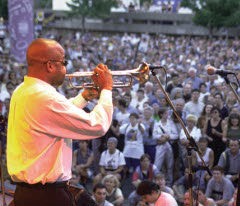
One of the largest festivals in all of Canada, the Montréal International Jazz Festival features around 3,000 artists from all over the world on 20 different stages. The weeklong event draws millions of music lovers every year in late June, and many performances are available for free to the public. Popular artists that have performed have been Patricia Barber, Morcheeba, Steel Pulse, Peter Frampton, Buddy Guy, Colin James and Melody Gardot.
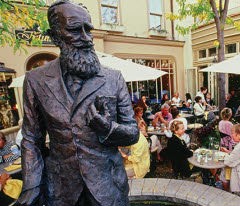
If you’re passionate about theater, the not-for-profit Shaw Festival should definitely be on your list. Run by the second largest repertory theater company in North America, the Shaw Festival features 14 plays on three different stages, all set in the stunning Niagara wine country in Ontario. Unlike a typical festival that happens annually for a week or weekend, this festival lasts from April to December, with plenty of play options to choose from.
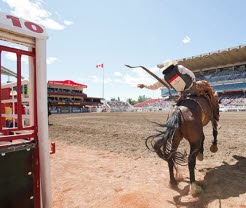
Experience the “Greatest Outdoor Show on Earth” in Alberta where Canadian cowboys and cowgirls show off their skills at the world’s largest rodeo. This 10-day event in July features bull riding, barrel racing, steer wrestling, tie-down roping and more. Although this festival’s main focus is to teach Western culture, as well as First Nations traditions, it also features a music festival with 300 performers on five stages, a parade and grand fireworks display.

With around 500,000 people attending every year, the Toronto International Film Festival is one of the largest publicly attended film festivals in the world. Every September, roughly 400 films are showcased on about 30 screens, including many future Academy Award-winners such as "The King’s Speech," "12 Years a Slave" and "Green Book."
“Exploring the Maritime Provinces of Canada in the fall with amazing colors and cool weather, experiencing the popular ‘tourist sites’ without the crowds, tasting the most delicious Canadian offerings and being led by an outstanding, compassionate leader who knows about all things Canadian – you owe it to yourself to discover the Canadian Maritimes with Road Scholar! I can't imagine finishing life without a serious visit to our great neighbors to the north.”
— Marstin from San Anselmo, Calif. —
Canadian History
Though inhabited by Aboriginal peoples for centuries, the first European explorer who touched Canadian soil was John Cabot in 1497, followed shortly after by Jacques Cartier, who claimed the east coast for France. Soon, Britain also sailed toward this new land, claiming part of the present-day Canadian Maritimes and pushing the indigenous tribes out of the region along with the other European explorers. After several battles over land ownership between the French and British, Canada was officially born in 1867 and consisted of just three provinces, though the next 30 years would bring seven new provinces and territories to this land. 1946 and 1999 would complete what is now modern-day Canada with the addition of Newfoundland and Labrador and Nunavut, respectively.
A brief timeline of Canada’s history
14,000 BCE
The first known inhabitants of Canada are the Paleo-Indians, who moved across the Beringia land bridge from eastern Siberia into Yukon
1534
Jacques Cartier claims the shores of the Gulf of St. Lawrence for France.
1583
Newfoundland becomes England’s first overseas colony.
1756
The Seven Year’s War begins between the French and British Canadian colonies, and ends with Britain claiming Québec..
1867
The British North America Act united Ontario, Québec, Nova Scotia and New Brunswick as the Dominion of Canada.
1870-1880
Manitoba enters the Dominion of Canada, followed by British Columbia, Prince Edward Island and the Northwest Territories.
1898
With the popularity of the gold rush, Yukon is separated from the Northwest Territories.
1905
Alberta and Saskatchewan become provinces in Canada.
1949
Newfoundland becomes the next province to be a part of Canada.
1982
Great Britain transfers all legal powers to Canada, granting it complete independence.
1999
Nunavut is the last territory or province to become a part of Canada, completing what is now the modern country.
What to Expect When Traveling to Canada
“We ventured to Manitoba to see the Northern Lights, which we did – it was a grand display and we watched it for hours. However Manitoba is so much more, from visiting the museums in Winnipeg to staying at the research facility in Churchill. The lecturers were excellent: the information on the aurora borealis, how to photograph it, local cultural history and learning the current situation of the indigenous peoples were all bonuses!”
— Marilyn from Rockville, Maryland —
Where to Stay in Canada
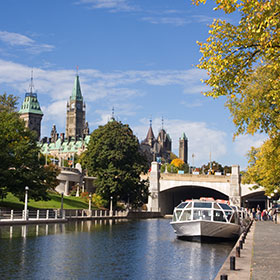
From historic hotels to beachside resorts, there are a variety of options when it comes to staying in Canada. Enjoy sleeping close to nature in a national park lodge, or camp under the stars in one of the country’s many Dark Sky Reserves. Or, take a step back in time at some of Canada’s most historic hotels like Le Château Frontenac in Québec City and the Empress Hotel in Victoria. If you want to live like a local, you may enjoy booking your accommodations ahead of time with sites like Airbnb.
Canada Travel Tips
If you’re planning a trip to Canada, here are a few things to do before going to Canada and tips to make the most out of your visit.
Brush up on your French
Although English is widely known even in the bilingual provinces, a “bonjour” or “merci” is always appreciated. In addition to brushing up before traveling, there are a number of handy apps that are free to download on your phone that can help translate back and forth between English and dozens of other languages, including Google Translate for both Apple and Android devices.
Useful French Phrases
- Hello; Good day — Bonjour
- Good evening — Bonsoir
- Goodbye — Au revoir
- My Name is Marie. — Je m’appelle Marie.
- How are you? — Ça va?
- I’m fine, thank you. — Bien, merci.
- Yes/No — Oui/Non
- Excuse me. — Pardon, excusez-moi.
- Do you speak English? — Parlez vous anglais?
- I don’t speak French. — Je ne parle pas français.
- I don’t understand. — Je ne comprends pas.
- Where is...? — Où est...? —
- Where are the bathrooms? — Où sont les toilettes?
- How much does it cost? — C’est combien?
- Can you help me? — Pouvez-vous m'aider?
- Please —S'il vous plaît
- Thank you. — Merci.
- You’re welcome. — Je vous en prie.
- I’m sorry. — Je suis désolé.
- Check, please. — La facture, s'il vous plaît.
What to Pack for Canada
- Cash (to exchange for local Canadian Dollars)
- Passport
- Credit card (Visa and MasterCard preferred)
- Comfortable walking shoes and sandals/flip flops
- Full med-kit (some comfort items may not be easy to find)
- U.S driver’s license (if you’re intending to drive)
- Medical insurance card
- Thermal underwear (if traveling in the winter)
- Outlet Adapter (if traveling to Canada from somewhere other than the U.S.)
Don’t Forget Souvenirs
If you’re going to be in Canada for less than 48 hours, you can bring back $200 worth of goods duty free, and that amount will go up to $800 if you’re staying for longer than that. Planning on taking home some delicious ice wine? You’re in luck, because the U.S. allows you to bring back 1 liter of alcohol duty free from Canada, and you can also bring back 200 cigarettes or 100 cigars (provided they’re not from Cuba). Items that are prohibited from being brought into the U.S. are: Fruits, vegetables, plants, cut flowers, meat and animal products.
“British Columbia surpassed my expectations. You can't guarantee that wildlife will appear when you want, however, the wildlife we saw apparently didn't get that message! Bears, orcas, humpbacks, porpoises, dolphins, sea lions, harbor seals, eagles, great blue herons all appeared as if on call.”
— Barbara from Weimar, Calif. —
Best Places to Visit in Canada
Still wondering where to go in Canada? Here are a few of the best cities, national parks and places to visit.

Straddling the New York and Ontario border, this iconic waterfall group is a must-see. The largest of the three falls is the 167-foot-tall Horseshoe Falls, or the Canadian Falls, which has the most powerful waterfall flow rate in North America. You can explore all three falls from above at beautiful lookout points or you can study them from below during fascinating boat rides in the Niagara Gorge. If you’re looking to unwind after an exciting day at the falls, the area is actually home to quite a few wine tours that make for perfect way to round out your adventure.
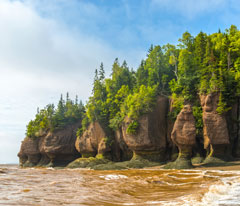
Two of the smallest Canadian provinces, New Brunswick and Nova Scotia are home to one of Canada’s greatest phenomena: the Bay of Fundy. As 50 feet of water swell in and out of the coastline twice a day, entire landmasses are exposed, not to mention the little critters that live on the ocean floor. Discover the most powerful tides in the world during high tide at Hopewell Rocks in New Brunswick, where the incredible tides rise, making the 40-70 foot sandstone structures look like small rocks dotting the ocean. Then return at low tide to see these massive structures fully exposed, putting into extraordinary context the impact of the Bay of Fundy.

Nestled in the Rocky Mountains in Alberta, Banff National Park is one of the most beautiful places Canada has to offer. Glacier-fed lakes tint the water a crystal blue, snow-peaked mountains blend with the coniferous forests that cling to cliffs and hikers, bikers and kayakers alike can be seen enjoying this natural paradise. Keep an eye out for the moose, elk, bighorn sheep and bison that roam Banff’s acres of verdant landscapes or walk through the small town to get a taste of local culture. We recommend exploring the breathtaking ice fields in Canada’s first national park, and then make your way to its neighbor, Jasper National Park, for a nature-filled weekend in Canada’s most picturesque landscapes.
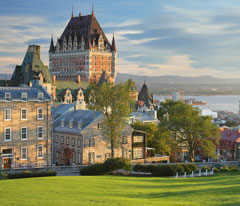
A beautiful blend of Canadian and French culture, Québec City is a melting pot unlike any other. With its Old Town deemed a UNESCO World Heritage Site, the distinction of being the only fortified city north of Mexico and 18th-century architecture around nearly every corner, Québec City is more like a living museum than a capital. Brush up on your French while exploring the galleries, bistros and bookstores of this bilingual city, and immerse yourself in the 400 years of history that lies around every cobbled corner.

Head over to the West Coast to explore the treasures of Vancouver, the capital of British Columbia. Edgy yet historic, artistic yet refined, Vancouver is a city full of distinct flavors in every one of its unique neighborhoods from Gastown to Yaletown. Surrounded by water that breathes vibrant life into the city, Vancouver is filled with gardens and green spaces, including one of the world’s largest at Stanley Park. Hop on a bike like the locals to explore the massive murals and Art-Deco architecture or stop in a captivating restaurant in this world-famous food city. However you choose to explore, you’re sure to be met with open arms as the locals show you the true meaning of Canadian hospitality.

Top Things to Do in Canada
If you’re looking for a quick sightseeing guide, here are a few of our favorite “must-do” activities in Canada.
- Head to Manitoba to search for the northern lights as they dance beautiful greens and yellows across the sky in Churchill.
- From the waterfalls of Waterton Lakes National Park to birdwatching in Point Pelee National Park, each one of Canada’s 48 parks is begging to be explored.
- Kayaking, rafting and canoeing are great ways to get a different perspective of Canada from its glacier-fed lakes and mighty rivers.
- Put your best foot forward on hikes throughout Canada’s mountain ranges and boreal forests. We recommend starting at the Canadian Rockies or making your way to Gros Morne National Park.
- Did you know 60% of the world’s polar bear population lives in Canada? Get up close to these beautiful creatures in Manitoba’s Hudson Bay with expert conservationists.
- Keep an eye out for arctic foxes, moose, humpback whales and more unique wildlife that call Canada home as you learn why each animal is drawn to each region.
- Though many places shut down for the winter, Canada thrives! Take advantage of the colder weather and mountain landscapes while skiing, curling, snowshoeing, dog sledding, snowboarding and playing hockey.
“Newfoundland has icebergs, snow-capped peaks, scenic bays, miles of green forest, fog-shrouded valleys, and more and more. But even more, Newfoundlanders possess a greeting spirit unlike virtually any we have seen. They listen not just to be polite but because they want to hear what you say. They welcome you because they love their land and they want you to love it too.”
— Russell from Normal Ill. —
FAQs
Do you need a passport to travel to Canada?
Yes, like most countries, Canada requires international travelers to have a passport when traveling to Canada. One of the most important tips for going to Canada is to ensure your passport is valid for at least six months beyond your intended stay, which is a precaution should an emergency arise that requires you to stay in Canada longer than expected.
Can U.S. citizens travel to Canada without a passport?
No, like any international traveler, Canada requires U.S. citizens to present a valid passport when crossing its border. However, U.S. citizens can also use a valid passport card or NEXUS card to prove their identity.
Do I need a visa to travel to Canada?
For U.S. citizens, a visa is not required to travel to Canada if tourism travel is less than 180 days. However, other types of travel may require a visa, and more information can be found on Canada’s Immigration and Citizenship website.
What do I need to travel to Canada?
Travelers looking to explore Canada will need a valid passport or visa that proves their citizenship and identity, depending on their country and reason for travel. However, along with the appropriate travel documents, there are other important tips for visiting Canada to keep in mind to ensure a smooth visit.
One of the top tips to travel to Canada is to pack accordingly. The weather and temperature can fluctuate drastically, especially at altitude and depending on the time of year, so make sure to pack layers that you can take off or put on to remain comfortable on your adventures. Additionally, make sure to pack any necessary medications, along with other essentials like food and water to stay hydrated and energized on U.S. and Canada travel tours.
Is it safe to travel to Canada?
Yes, overall, Canada is a safe place to travel. The U.S. Department of State advises travelers to exercise normal precautions when exploring Canada, which is the lowest travel advisory the U.S. grants other countries due to low safety and security risks.
Read Up Before You Go
More Canada Travel Blogs:







